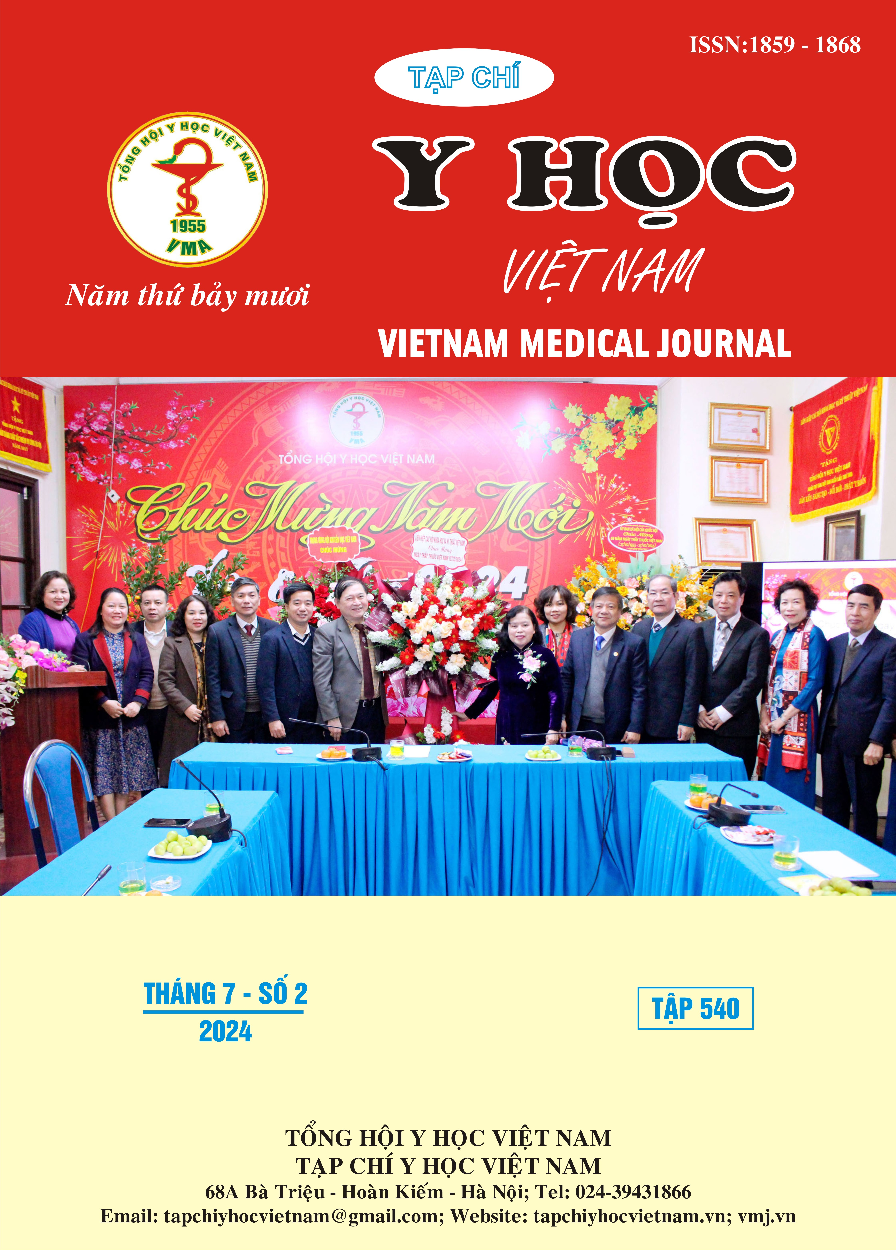THE CURRENT SITUATION AND RELATIONSHIP BETWEEN ORAL HEALTH CARE BEHAVIORS AND TOOTH DECAY IN 5TH GRADE STUDENTS
Main Article Content
Abstract
Purpose: Describe the current situation and relationship between oral health care behaviors and tooth decay in 5th grade students. Subjects and methods: This cross-sectional descriptive study was conducted in 502 12-year-old students (5th grade), studying at Kim Lien – Dong Da Primary School - Hanoi and Ly Thai To Primary School - Trung Hoa - Cau Giay – Hanoi. Results: 79.5% of students brushed their teeth twice a day; 9.5% of students brushed their teeth immediately after eating. The main brushing time is morning and evening (80.7%). Besides, 40.6% students brush their teeth for 2 minutes, while the figure for those brushing their teeth for 2-3 minutes is 46%. Children who brush their teeth only in the evening or both morning and evening have 3.43 and 2.69 times higher risk of tooth decay than children who brush their teeth right after eating. Children who brush their teeth for 2-3 minutes have a 0.64-fold reduced risk of tooth decay compared to children who only brush their teeth for 2 minutes. Conclusion: Children's oral health care behavior is not good. Time and duration of tooth brushing are factors that increase the risk of tooth decay.
Article Details
Keywords
Tooth decay, behavior, related factor.
References
2. Trần Tấn Tài. Thực trạng bệnh sâu răng và hiệu quả của giải pháp can thiệp cộng đồng của học sinh tại một số trường Tiểu học ở Thừa Thiên Huế. Luận án Tiến sĩ y học, Trường Đại học Y Dược – Đại học Huế, 2016.
3. Trần Thị Kim Thúy, Trịnh Đình Hải, Lê Thị Thu Hà. Thực trạng sâu răng vĩnh viễn giai đoạn sớm và một số thói quen vệ sinh răng miệng ở học sinh 7-8 tuổi. Tạp chí Y học Việt Nam, 2019;474(2):103-107.
4. Ngô Văn Toàn, Vũ Mạnh Tuấn. Phương pháp nghiên cứu khoa học trong Răng Hàm Mặt. Nhà xuất bản Giáo dục Việt Nam; 2021:47-60.
5. Trịnh Đình Hải, Nguyễn Hồng Minh, Trần Cao Bính. Điều tra sức khỏe răng miệng toàn quốc năm 2019. Nhà xuất bản Y học Hà Nội. 2019; 24-25.
6. Nguyễn Ngọc Nghĩa. Nghiên cứu thực trạng và kiến thức, thái độ, thực hành về bệnh răng miệng của học sinh tiểu học tại huyện Văn Chấn, tỉnh Yên Bái năm 2009, Luận văn Thạc sĩ Y học, Trường Đại học Y Dược Thái Nguyên. 2009;72-73.
7. American Academy of Pediatric Dentistry. Guideline on periodicity of examination, preventive dental services, anticipatory guidance/ counseling, and oral treatment for infants, children, and adolescents. Pediatr Dent., 2013;37: 123-130.
8. Shaghaghian S, Zeraatkar M. Factors Affecting Oral Hygiene and Tooth Brushing in Preschool Children, Shiraz/Iran. J Dent Biomater. 2017;4(2): 394-402.
9. Al-Mutawa S, Shyama M, Al-Duwairi Y, et al. Oral hygiene status of Kuwaiti schoolchildren. East Mediterr Health J., 2011;17, 387-391.


